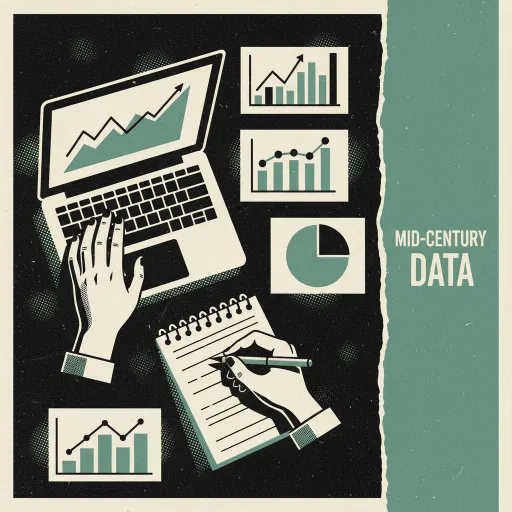Saving money should be simple math: spend less than you earn, set aside the difference. Yet despite knowing this formula, millions of people struggle to save consistently. The average American has less than $1,000 in savings, even though most earn enough to save substantially more.
The problem isn’t mathematical—it’s psychological.
Understanding why your brain works against your savings goals is the first step toward building wealth effortlessly. Let’s explore the hidden mental forces that sabotage your savings and practical strategies to work with your psychology, not against it.

The Evolutionary Trap: Why Your Brain Hates Saving
The Survival Paradox
Your brain evolved during times when scarcity was the norm and tomorrow wasn’t guaranteed. From an evolutionary perspective, consuming resources immediately made perfect sense—why save berries when they might rot or be stolen?
This survival mechanism, called present bias, makes immediate rewards feel disproportionately valuable compared to future benefits. Your brain literally values $100 today more than $150 in a year, even though the math clearly favors waiting.
The Pleasure Prediction Error
Behavioral economists have discovered that we consistently overestimate how much happiness purchases will bring us. That new gadget, outfit, or dining experience promises more joy than it actually delivers, yet we repeat this pattern endlessly.
Meanwhile, saving money provides no immediate dopamine hit. The reward is abstract, delayed, and often invisible—making it psychologically unrewarding despite being financially beneficial.
“These psychological insights become actionable when combined with practical systems. See how one person applied behavioral strategies in How I Saved $10,000 in a Year Without Cutting Out Coffee.”
The Five Mental Traps That Kill Your Savings

Trap 1: The Planning Fallacy
What It Is: Systematically underestimating future expenses while overestimating your ability to save.
How It Manifests: You budget $200 for groceries but spend $280. You plan to save $500 but only manage $150. You assume next month will be different, but it rarely is.
The Psychology: Your brain uses “best case scenario” thinking when planning but “worst case scenario” behavior when executing. You plan based on your ideal self but live as your actual self.
Example: Sarah plans to save $400/month but hasn’t accounted for her friend’s birthday dinner, her car’s oil change, or her impulse Target run. She saves $75 and wonders why she “lacks willpower.”
Trap 2: The Categorization Confusion
What It Is: Your brain treats money differently based on its “source” or “purpose,” leading to irrational decisions.
How It Manifests: You’ll spend $50 from your checking account without thinking but agonize over spending $20 from your “vacation fund.” You’ll buy lunch with a credit card but refuse to touch savings for the same purchase.
The Psychology: Mental accounting makes you treat identical dollars as if they have different values based on arbitrary categories your mind creates.
Example: Mike has $300 in his “entertainment” fund and $2,000 in savings, but he puts a $200 dinner on his credit card instead of using either existing fund.
Trap 3: The Status Signal Spending
What It Is: Using purchases to communicate social status, often unconsciously.
How It Manifests: Buying brand names when generic alternatives are identical, upgrading purchases when others will see them, or spending to “keep up” with social groups.
The Psychology: Evolutionary psychology suggests that displaying resources historically helped attract mates and maintain social standing. Modern advertising exploits this by positioning products as status symbols.
Example: Jessica spends $150 on designer jeans instead of $40 on identical-quality alternatives because she fears being judged for wearing “cheap” clothing.
Trap 4: The Emotional Regulation Shopping

What It Is: Using purchases to manage emotions, stress, or psychological needs.
How It Manifests: “Retail therapy” after bad days, stress shopping during difficult periods, or buying things to feel more confident or in control.
The Psychology: Shopping triggers dopamine release and can temporarily improve mood, making it an easy but expensive emotional coping mechanism.
Example: After a stressful work week, David spends $200 on gadgets he doesn’t need, feeling temporarily better but ultimately more stressed about his finances.
Trap 5: The Scarcity Mindset Paradox
What It Is: Feeling like you can’t afford to save because there’s “never enough” money.
How It Manifests: Believing you need to earn more before you can save, focusing on what you can’t afford instead of what you can control, or feeling hopeless about financial progress.
The Psychology: Scarcity mindset creates tunnel vision that focuses on immediate needs while ignoring long-term possibilities.
Example: Maria earns $50,000 but feels she “can’t afford” to save $100/month, yet spends $150/month on coffee and snacks without tracking it.
The Neuroscience of Spending vs. Saving
The Instant Gratification Circuit
When you see something you want to buy, your brain’s reward system activates immediately. The anterior cingulate cortex lights up with anticipation, releasing dopamine before you even make the purchase. This creates a powerful urge to buy now.
The Delayed Gratification Challenge
Saving money activates the prefrontal cortex—the brain region responsible for planning and self-control. This area is slower, requires more energy, and can become fatigued throughout the day, explaining why you’re more likely to overspend when tired or stressed.
The Pain of Paying
Interestingly, your brain experiences spending money as physical pain—literally. The anterior insula, which processes physical pain, also activates when parting with money. Credit cards and digital payments reduce this “pain of paying,” making overspending easier.
“Social media creates unique psychological challenges for savers. Learn specific strategies in Financial FOMO: How Social Media Makes You Spend More (and How to Fight Back).”
Psychology-Based Strategies That Actually Work
Strategy 1: Automate to Bypass Willpower

The Science: Decision fatigue depletes your self-control throughout the day. By automating savings, you remove the need for willpower entirely.
How to Implement:
- Set up automatic transfers immediately after paydays
- Use direct deposit to split paychecks between accounts
- Automate bill payments to prevent late fees
- Make saving the default, spending the active choice
Real-World Application: Instead of deciding whether to save each month, decide once to save automatically. Your future self will thank you for removing the psychological burden.
Strategy 2: Use Mental Accounting Strategically
The Science: Since your brain categorizes money anyway, create categories that support your goals.
How to Implement:
- Label savings accounts with specific goals (“Emergency Fund,” “Vacation,” “New Car”)
- Use separate accounts for different purposes
- Create visual representations of progress (charts, apps, thermometers)
- Celebrate reaching category milestones
Real-World Application: Emma saves $200/month in five $40 categories: Emergency ($40), Vacation ($40), Car Repair ($40), Holiday Gifts ($40), and Fun Money ($40). Each category feels manageable and has a clear purpose.
Strategy 3: Reduce Friction for Saving, Increase Friction for Spending
The Science: Behavioral economics shows that small obstacles significantly impact behavior. Make saving easier and spending harder.
Saving Friction Reduction:
- Keep savings accounts at different banks (harder to access impulsively)
- Use high-yield accounts that take 1-2 days to transfer money
- Set up automatic increases to savings rates
- Make saving the path of least resistance
Spending Friction Increase:
- Remove shopping apps from your phone
- Unsubscribe from promotional emails
- Use cash for discretionary spending
- Implement 24-48 hour waiting periods for non-essential purchases
Strategy 4: Reframe Your Relationship with Money
The Science: Cognitive reframing can change how your brain processes financial decisions.
Powerful Reframes:
- “I can’t afford it” → “It’s not a priority right now”
- “I’m bad with money” → “I’m learning better money habits”
- “Saving is sacrifice” → “Saving is buying freedom”
- “I don’t make enough” → “I’m optimizing what I have”
Visualization Technique: Instead of focusing on what you’re giving up, visualize what you’re gaining. See your future self enjoying financial security, taking that dream vacation, or feeling calm about money.
Strategy 5: Harness Social Psychology
The Science: Humans are social creatures whose behavior is heavily influenced by their environment and peer groups.
Social Strategies:
- Find an accountability partner with similar financial goals
- Join savings challenges or financial communities
- Share your goals with supportive friends and family
- Follow financial success stories on social media
- Surround yourself with people who model good financial behavior
Public Commitment: Research shows that publicly stating your goals significantly increases your likelihood of achieving them. Tell someone you trust about your savings targets.
Strategy 6: Create Positive Associations with Saving

The Science: Your brain learns through association. If saving feels good, you’ll do more of it.
Positive Association Techniques:
- Celebrate savings milestones with non-monetary rewards
- Track progress visually to create a sense of accomplishment
- Focus on what saving enables rather than what it restricts
- Create rituals around checking your savings balance
- Use apps that gamify the savings process
Example: Carlos checks his savings balance every Friday afternoon and treats it as a “weekly win.” The positive emotion associated with seeing growth motivates continued saving.
Strategy 7: Work with Your Brain’s Patterns
The Science: Understanding your personal psychology allows you to design systems that work with your tendencies, not against them.
Personal Pattern Analysis:
- Track when you’re most likely to overspend (tired, stressed, social situations)
- Identify your spending triggers (emotions, locations, people)
- Notice what makes saving feel easy vs. difficult
- Recognize your money personality type (spender, saver, avoider, etc.)
Customized Solutions:
- If you’re an emotional spender, create alternative coping mechanisms
- If you’re social spender, suggest lower-cost alternatives for group activities
- If you’re an impulse buyer, remove temptation from your environment
- If you’re a procrastinator, automate everything possible
“The psychological strategies work best within a structured framework. Consider starting with The 50/30/20 Rule Explained: Can It Really Fix Your Finances? to create your foundation.”
The 30-Day Psychology Reset Challenge
Transform your savings psychology with this evidence-based challenge:
Week 1: Awareness Building
- Track every purchase and note the emotion behind it
- Identify your top 3 spending triggers
- Notice when you feel most/least motivated to save
Week 2: Environment Design
- Set up automatic savings transfers
- Remove spending temptations from your environment
- Create visual reminders of your savings goals
Week 3: Positive Association Building
- Celebrate small savings wins
- Find a savings accountability partner
- Practice reframing negative money thoughts
Week 4: System Optimization
- Refine your automation based on what you learned
- Identify and address remaining friction points
- Plan for maintaining momentum beyond the challenge
Common Psychological Obstacles and Solutions
“I Don’t Make Enough to Save”
- Start with $1/day ($365/year) to prove it’s possible
- Focus on percentage-based goals rather than dollar amounts
- Track “found money” (coins, refunds, cashback) to demonstrate available funds
“Saving Feels Boring”
- Gamify the process with apps or challenges
- Set exciting, specific goals rather than vague “save more” objectives
- Create a vision board of what your savings will enable
“I Keep Starting and Stopping”
- Lower your initial savings amount to build consistency
- Focus on the habit, not the amount
- Address the root cause of your stopping pattern
“My Family/Friends Don’t Support My Goals”
- Find online communities with similar values
- Educate loved ones about your goals and why they matter
- Set boundaries around money conversations and activities
The Long-Term Psychology of Wealth Building
Identity Shift: Successful savers eventually shift from “I’m trying to save” to “I’m someone who saves.” This identity change makes saving feel natural rather than forced.
Compound Confidence: As your savings grow, your confidence in your ability to manage money increases, creating a positive feedback loop that makes saving progressively easier.
Future Self Connection: Research shows that people who feel more connected to their future selves make better long-term decisions. Regularly visualizing your future financial security strengthens this connection.
Your Personal Psychology Action Plan
- Identify Your Primary Psychological Barrier: Which of the five mental traps most affects your saving?
- Choose One Psychology-Based Strategy: Start with the strategy that best addresses your primary barrier.
- Create Environmental Support: Design your surroundings to make saving easier and spending harder.
- Build Social Support: Find at least one person who will support your financial goals.
- Monitor and Adjust: Pay attention to what works for your unique psychology and adjust accordingly.
The Bottom Line: Work with Your Brain, Not Against It
The reason saving feels difficult isn’t because you lack discipline or mathematical skills—it’s because you’re fighting millions of years of evolutionary psychology with willpower alone.
The solution isn’t to become a different person with superhuman self-control. It’s to understand how your mind works and create systems that harness your psychology for financial success.
When you align your savings strategy with your brain’s natural tendencies, saving stops feeling like deprivation and starts feeling like the logical, automatic thing to do.
Your future self is counting on you to understand this psychology and use it wisely. The good news? You now have the tools to make it happen.
What psychological barriers have you noticed in your own savings journey? Which strategies resonate most with your personality? Share your insights in the comments below.
Related Articles
- How Emergency Funds Save You from Credit Card Debt: Real Stories
- Minimalism vs. Consumerism: Which Lifestyle Saves You the Most?
- Why Cutting Subscriptions May Be Better Than Cutting Lattes
- 10 Best Free Budget Tracking Apps in 2025





